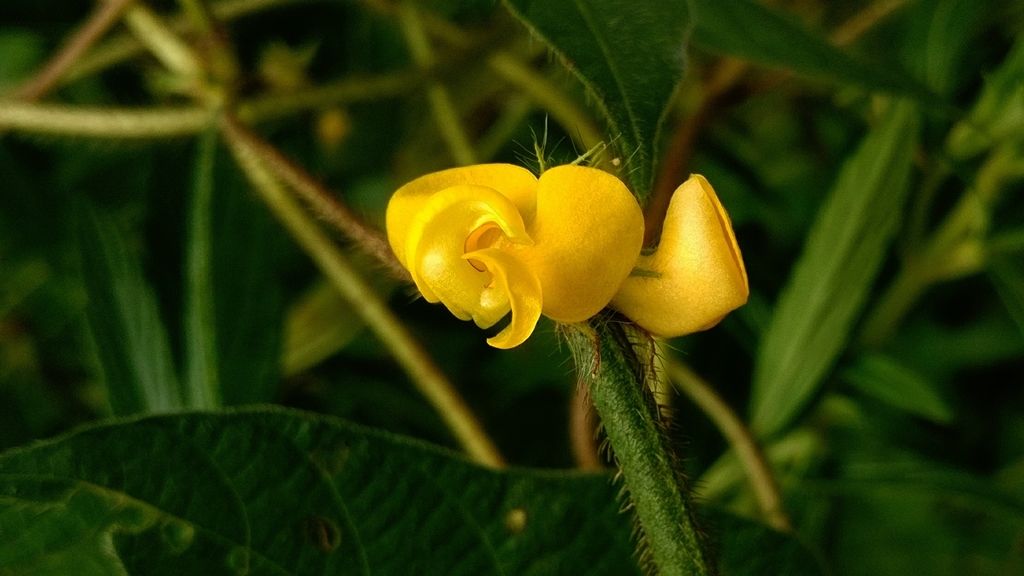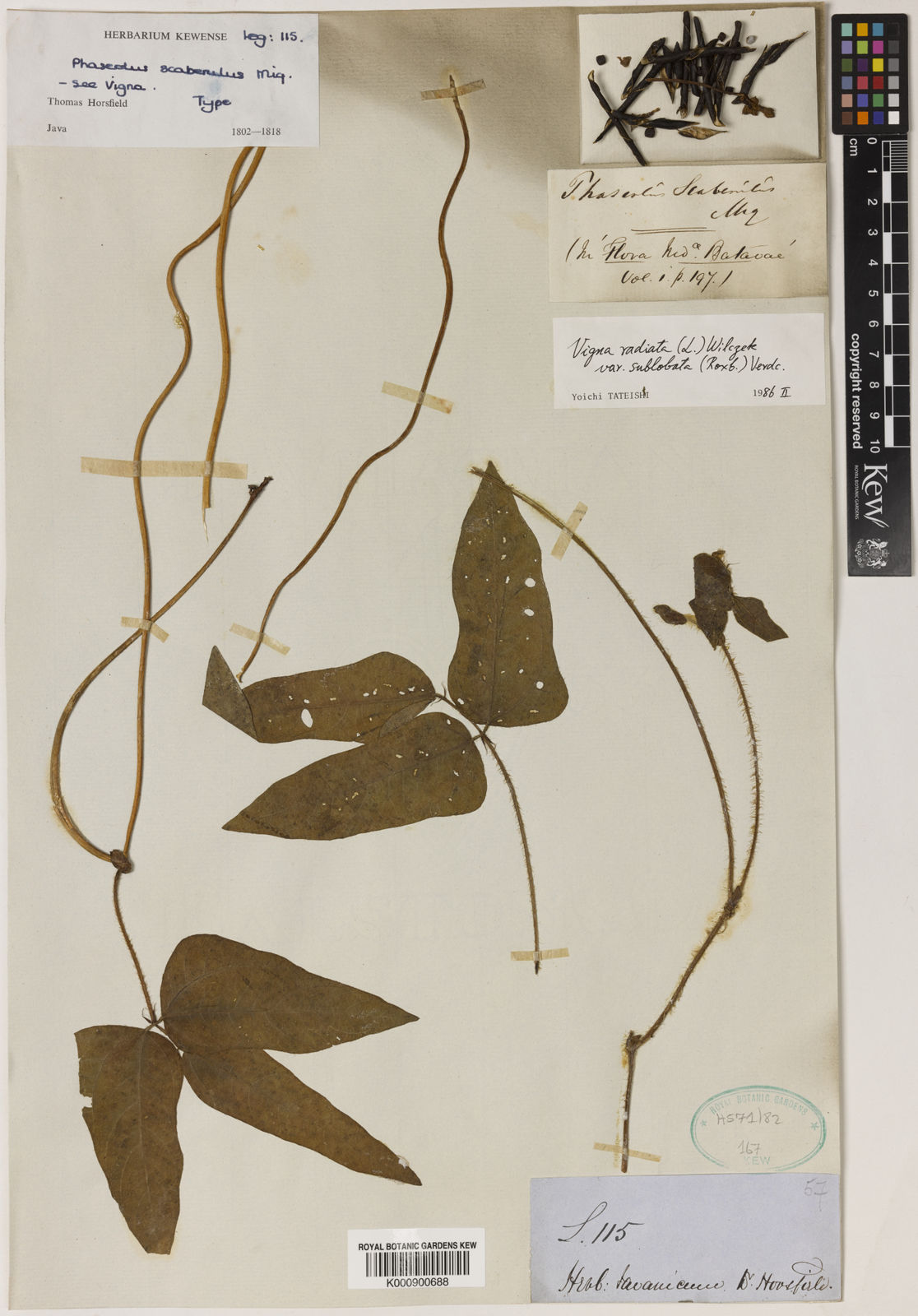Mung bean
vigna radiata
Also known as: ["Green gram","Monggo bean","Green soy"]
Overview
A leguminous plant cultivated for its edible seeds, widely used in Asian cuisine and traditional medicine.
Benefits & Perks
["edible fruits","medicinal use","culinary herb","wildlife attractant (bees, butterflies, birds)","drought tolerant"]
Botanical Classification
| Phylum: | Magnoliophyta |
| Class: | Magnoliopsida |
| Order: | Fabales |
| Family: | Fabaceae |
| Genus: | Vigna |
| Botanical Name: | Vigna radiata |
Plant Characteristics
Basic Information
- Category: Fruits
- Suitable Location: outdoor garden bed or container in a warm, sunny area
- Suitable For:
- Is Weed: No
- Allergenicity: low
Environmental Needs
- Climate: {"temperatureRange":"15–35°C"}
- Hardiness: {"zones":"9–11"}
- Misting: rarely required, only if ambient humidity is very low
- Drainage: Moderate to fast-draining.
- Soil Type: Well-draining loamy soil with organic matter.
Maintenance Level
- Maintenance Level: moderate
- Toughness Level: moderate
- Pruning Frequency: As needed; light thinning at seedling stage.
- Pruning Intensity: Light
Care Details
Ideal Sunlight Coverage:
Full sun (6–8 hours/day). Tolerates partial shade but may produce fewer pods. Adjust for extreme heat by providing afternoon shade.
Sunlight Tolerance Tips:
Acclimate seedlings gradually to full sun to prevent scorching. For hot climates, provide shade during peak afternoon hours. Indoors, place near a south-facing window with supplemental grow lights if needed.
Care Requirements
Care Difficulty
easyeasy
Sunlight
full sun to partial shade
Rotate plants for even light exposure; use shade cloth in extreme heat; avoid direct midday sun for young plants.
Watering
every 3–5 days during active growth, reduce in winter
Water deeply to encourage root growth; avoid waterlogging to prevent root rot; adjust frequency based on growth stage and weather.
Soil
well-draining, loamy soil with moderate organic matter
pH: 6.0–7.0 (slightly acidic to neutral).
Ensure good drainage to prevent root rot; amend with organic matter for fertility; test pH before planting.
Temperature
Warm-growing plant; ideal range 25–35°C (77–95°F). Germinates best at 25–30°C. Tolerates mild frosts but prefers frost-free conditions.
Use frost cloth in cool nights; water early to reduce heat stress; choose varieties suited to local climate.
Fertilizing
every 2–3 weeks during growing season with balanced liquid fertilizer
Avoid over-fertilizing nitrogen to prevent excessive foliage at the expense of pods; fertilize in early morning or evening; incorporate organic matter at planting.
Propagation
Methods
Seeds (direct sowing or indoor starting).
Step-by-Step Propagation Guide
- Sow seeds 2–3 cm deep, 5–10 cm apart. Thin seedlings to 15–20 cm apart. Water gently after planting.
Best Time: Spring, after last frost date, when soil temperatures are consistently above 20°C (68°F).
Environment
Warm, sunny location with good air circulation. Keep soil consistently moist but not waterlogged.
Medium
Well-draining soil mix (e.g., garden soil with compost).
Hormone
Not required for seeds.
Timeline
Germination: 7–10 days; maturity: 60–120 days depending on variety.
Tools Needed
Garden trowel, water can, seed markers.
Quick Tips
Sow seeds in clusters and thin later to ensure germination; use inoculant for better nitrogen fixation; keep soil warm for faster germination.
Pruning & Repotting
Pruning Guide
Method
Hand-pull or snip overcrowded seedlings. Remove yellowing or damaged leaves by cutting at the base.
Pruning Plan
Minimal pruning needed. Remove dead or damaged foliage as needed. Lightly thin overcrowded seedlings early in growth.
Tools
Garden snips, hands (for thinning).
Checklist
Remove damaged leaves; thin overcrowded seedlings; avoid excessive pruning during flowering.
Repotting Guide
Best Season
N/A
Pot Size
N/A
Method
N/A
Suggestions
Not applicable (grown directly in garden beds or large containers).
Checklist
N/A
Advanced Care Tips
Watering Mastery
Watering Checklist
Check soil moisture before watering; water early morning; avoid wetting foliage; ensure drainage; adjust for weather.
How to Apply Water Properly
Water at the base of the plant, ensuring even moisture distribution around the root zone. Water early in the morning to minimize evaporation and fungal issues. Ensure excess water drains away to prevent waterlogging.
Watering Schedule Tips
Water lightly during germination, then maintain consistent moisture for seedlings. Reduce frequency as plants mature, allowing soil to dry slightly between waterings. Increase during flowering and pod development, then taper off as pods mature.
Soil Improvement
Add compost or well-rotted manure to enhance fertility and structure. Incorporate sand or perlite if soil is heavy clay.
Temperature Stress Management
Signs of Temperature Issues
Cold stress: stunted growth, yellowing leaves, poor germination. Heat stress: wilting, leaf scorch, reduced pod set.
Cold Stress
Low temperatures slow growth, inhibit nitrogen fixation, and may cause flower/fruit drop. Prolonged cold can lead to plant death.
Solution: Plant in spring after last frost. Use row covers or cold frames in cooler climates. Choose cold-tolerant varieties if possible.
Hot Stress
Excessive heat causes wilting, leaf burn, and reduced photosynthesis. May lead to flower abortion and poor pod development.
Solution: Provide afternoon shade, increase watering, use mulch to retain soil moisture, and plant heat-tolerant varieties.
Fertilizing Guide
Fertilizing Checklist
Use balanced fertilizer; dilute properly; apply during active growth; avoid foliage contact; stop before harvest.
Fertilizing Method
Use balanced, water-soluble fertilizer (10-10-10) at half strength every 4–6 weeks during active growth. Reduce or stop fertilizing during flowering and pod maturation to avoid reducing yields.
Common Problems & Solutions
Toxicity Warning
Cats
Non-toxicMung beans are not considered toxic to cats when consumed in moderation. They can be included in a cat's diet as a source of plant-based protein, though they should not replace meat-based proteins.
⚡ Toxic If:
Generally non-toxic
Dogs
Non-toxicMung beans are not considered toxic to dogs when consumed in moderation. They can be a part of a balanced diet for dogs, providing protein and other nutrients.
⚡ Toxic If:
Generally non-toxic
Humans
Non-toxicVigna radiata, commonly known as mung bean, is generally considered non-toxic to humans when consumed in typical culinary preparations. It is a widely cultivated legume used in various cuisines for its nutritional benefits.
⚡ Toxic If:
Generally non-toxic
Frequently Asked Questions
Q: Is mung bean safe for human consumption?
A: Yes, mung beans are non-toxic and widely consumed as a nutritious food source.
Q: How do I grow mung beans?
A: Mung beans thrive in well-drained soil with full sun exposure. They require moderate watering and are relatively easy to cultivate.
Q: Can mung beans be used in cooking?
A: Absolutely, mung beans are a staple in many cuisines, often used in soups, stews, salads, and sprouted for salads and sandwiches.
Quick Reference
| Family: | Fabaceae |
| Care: | easy |
| Light: | full sun to partial shade |
| Water: | every 3–5 days during active |
Get Expert Care Tips
Download the Plantious app for personalized care reminders and plant identification!
Google Play App Store








